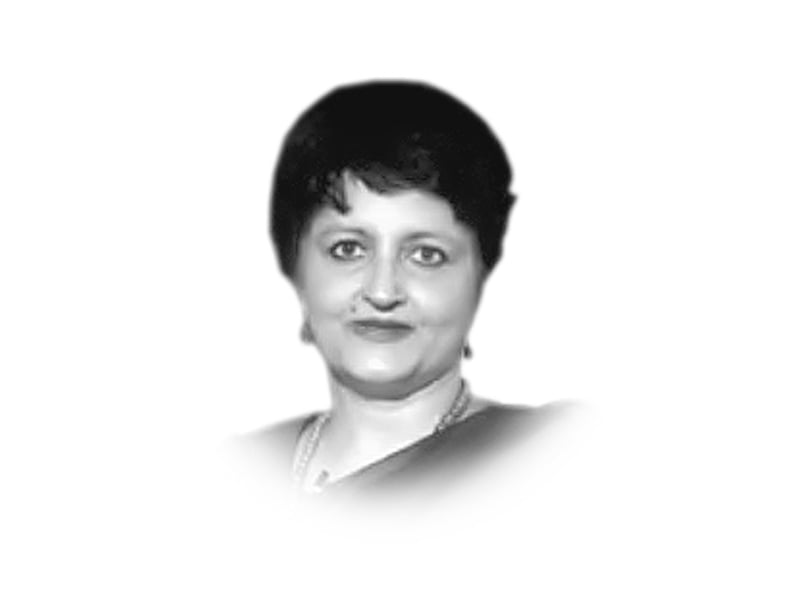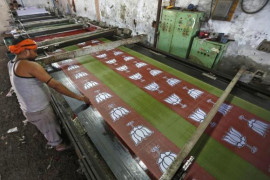
Just when it seemed that at least the 2014 general elections in India would pass without the usual bogey references to Pakistan, the BJP’s prime ministerial candidate, Narendra Modi, did the needful and described Indian Defence Minister AK Antony and his principal opponent in Varanasi, Arvind Kejriwal, as variations of the machine gun made famous by terrorists and, of course, as Pakistani agents.
The Congress condemned it, but not as vociferously as one would have thought, and Kejriwal might have also, but given the media decision to report him in parts, this has not really become “viral”.
The election temperatures are rising, as till now Modi had a pretty clear field to campaign in. He started early and spent months addressing public rallies –– he does not like close interactions where uncomfortable questions can be asked –– and in the first stage, he managed to at least demolish the Congress party and its First Family –– as this was clearly the space the BJP wanted to occupy from the onset.
However, now the Gujarat chief minister has started feeling the heat as even the Congress party seems to have revved up its act a little bit, and scion Rahul Gandhi is definitely appearing a little more confident and assertive these days. But more than that, the regional parties have finalised most of their candidates and their campaigns, and are now firmly in the fray where the BJP and the Congress are both at the receiving end. So there is criticism of Modi and the BJP, with the chieftains of the federal parties just about starting a blistering attack on him and, of course, the Congress.
The wild card, Aam Aadmi Party’s Kejriwal, has also contributed with his rather significant visit to Gujarat and now his decision to oppose Modi in Varanasi. Kejriwal, despite the media’s preoccupation with the sole egg thrown at him, addressed a huge rally and got pretty good support in a constituency that is largely being perceived as a saffron bastion. It will be an intense battle and it remains to be seen who succeeds in polarising what and whether the rural constituency is as enamoured of Modi as is the city of Varanasi.
Indian elections are all about the imponderables that somehow escape the media and pollsters, particularly in complex states like Uttar Pradesh (UP) and Bihar where caste equations dominate and Muslims usually resort to tactical rather than bulk voting. For instance, in western UP –– the seat of the Muzaffarnagar violence –– Muslims are looking largely at Mayawati and her Bahujan Samaj Party. But the jury is still out in central and eastern UP where Mulayam Singh holds sway and a few Congress party candidates command personal loyalties.
There is no doubt the BJP will emerge as the single-largest party in India, but it cannot be said at this stage with any degree of certainty whether it will get 160 Lok Sabha seats or 200 seats. This will make all the difference between forming the government or sitting in the opposition.
There is no doubt, too, that the Congress party is on its way out and will lose a dramatic number of seats in these polls. But again, while it will probably drop below 100 seats, the Indian electorate has a strange way of upping the ante by doing the unpredictable and the Congress could end up with a little more respectable three-digit score. Unlikely, but as they say, possible.
Interestingly, the focus of these elections has been on development, corruption and inflation. It has also been on communalism, but not overtly as secular India is feeling the pressure of these polls. All eyes are thus on the regional parties that are still responding to federal goals and are led by astute politicians who know the ground and their constituents well. They also tend to work without too much fanfare on the ground, consolidating what they have and trying to add more.
Of course, electoral waves tend to subsume such considerations, but then the big debate in India is whether there is a wave or not. There is an assertion of certain castes and sections of society, but this often gets mistaken for a wave –– when actually there is none. The next month is crucial as all the tricks of the trade will be used, and perhaps even more by some of the larger parties in the fray who have the media with them, in addition to the corporate houses drooling in support.
Published in The Express Tribune, March 29th, 2014.
Like Opinion & Editorial on Facebook, follow @ETOpEd on Twitter to receive all updates on all our daily pieces.
COMMENTS (3)
Comments are moderated and generally will be posted if they are on-topic and not abusive.
For more information, please see our Comments FAQ



































































In an article in today's economic times, Nilanjan Mukhopadhyay, one of Modi's biographers writes: "In his first election campaign in Gujarat in 2002, Modi had drawn Pakistan into the arena by frequently referring to its then President Pervez Musharraf as Mian Musharraf. His campaign projected his adversaries in the state, political as well as social, as being proxy fronts of the Pakistani state. Presenting himself as the bulwark against anti-national forces has been Modi's forte and he resorted to this tactic whenever he felt the need for an additional push. That Modi has raised the specter of Pakistan at this time is significant for reasons not difficult to deduce." Not difficult to deduce being the key words here.
Coming elections, not my comments, would prove you wrong. Modi Aane Valaa Hai.
Watch the clip today showing the Congress candidate from Saharanpur, near Muzaffarnagar, and note the peaceful language used by him.
From this I gather that the BJP will win but may not get the requisite numbers to form a government by itself ....and the true give-and-take process will then start for the BJP to get the numbers. If I am not wrong this scenario has been played out in the past as well and it will play out again. The role of the media, party politics, big business interests, religious undertones etc, good or bad has to there. It would be unrealistic to expect these forces to remain distant from the process.